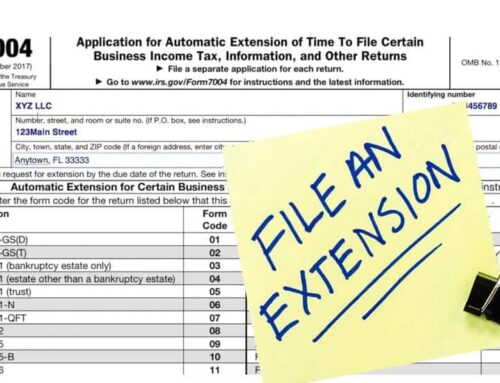One of the important reasons why people work with CPAs to for assistance with their personal taxes. There have been many changes to the tax code this past year, which can get confusing. One of the most asked about changes has been to the child tax credits. The first child tax credit payment was sent out July 15 to qualifying families. Eligible families are receiving $300 each month for each child under age 6, and up to $250 a month for each kid ages 6 to 17 through December. This can be extremely helpful for families that are struggling due to the pandemic. Unsure of what to expect or when to expect your next child tax credit payment? We’re here to help.
Eligibility
To qualify for child tax credit payments, you– and your spouse, if you filed a joint return– must have:
- Filed a 2019 or 2020 tax return and claimed the Child Tax Credit or given the IRS information in 2020 to receive the Economic Impact Payment
- A main residence in the United States for more than half a year or file a joint return with a spouse who has a main residence in the United States for more than half a year
- Qualifying child(ren) under 18 at the end of 2021 who has a social security number and made less than certain income limits
Income Limits
Income limits and the age of children will determine how much you receive or if you even qualify. There is no limit on how many children you can receive credit for as long as you are eligible.
Single filers that earn less than $75,000 per year, heads of household earnings less than $112,500 per year, and married couples earning less than $150,000 per year are eligible for the full amount. For higher incomes, the payment amount will phase out by $50 for every $1,000 over those threshold amounts.
Payment
You will not receive all of the child tax credit money this year. You will receive half of the money in monthly payments this year, and the rest in 2022 when you file your taxes. In other words, your largest payment arrives next year, which can be up to $1,800 per child. Until then, you get six smaller payments from July 2021- December 2021 to start using right away. The idea is to bring families money sooner to help with rent, food, daycare, etc. But, if you do not want to receive the monthly payments, you can contact the IRS to get one lump sum payment in 2022.
Most families will get their monthly child tax credit payments deposited directly into their bank account if the IRS has bank account information from your 2019 or 2020 tax return; the IRS’s online tool used in 2020 for the first-round stimulus check; or from a federal agency that provides you benefits such as the Social Security Administration, Department of Veterans Affairs, or the Railroad Retirement Board. If the IRS does not have your bank account information, it will be sent as a paper check or debit card by mail. If you need to change your bank account information you can use the Child Tax Credit Update Portal on the IRS website.
Child Tax Credit Payment Schedule
| Monthly | Maximum payment per child 5 and younger | Maximum payment per child; 6-17 |
| July 15: First 2021 payment | $300 | $250 |
| Aug. 13 | $300 | $250 |
| Sep. 15 | $300 | $250 |
| Oct. 15 | $300 | $250 |
| Nov. 15 | $300 | $250 |
| Dec. 15: Last 2021 payment | $300 | $250 |
| April 2022: Second half of payment | $1,800 | $1,500 |
Opting Out
It is too late to opt out of the July payment, but if you choose to opt out for future payments you can do so on the IRS Child Tax Credit Update Portal online. You can cancel your enrollment anytime between now and December. Once you opt out you are not able to re-enroll at this time. To stop advance payments, the IRS says you need to opt out three days before the first Thursday of the following month. Here is a chart to help you out:
Child Tax Credit Payment Enrollment Cancellation Dates
| Payment Month | Enrollment Cancellation Date | Payment Date |
| July | June 28 | July 15 |
| August | Aug. 2 | Aug. 13 |
| September | Aug. 30 | Sept. 15 |
| October | Oct. 4 | Oct. 15 |
| November | Nov. 1 | Nov. 15 |
| December | Nov. 29 | Dec. 15 |
The Child Tax Credit Update Portal
The portal currently lets families see their eligibility, manage their payments and cancel enrollment from the monthly payments. Parents can also update their bank account information for direct deposit using the portal.
In the coming months, the portal will allow families to update other information if their circumstances change. For example, if a new child has arrived or will arrive in 2021 and isn’t reflected on the 2020 tax return. You will also be able to update your mailing address, marital status, income or dependents to have the most up-to-date eligibility information.
Need help understanding any of the new tax laws for 2021 and beyond? The team at Hayes and Associates is here for all your needs! Contact us today.





